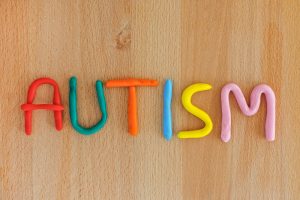In my experience of teaching meditation (sometimes called mindfulness)  I’ve noticed over the years how it’s become a popular way to help adults and children reduce the symptoms of stress and support a healthier lifestyle.
I’ve noticed over the years how it’s become a popular way to help adults and children reduce the symptoms of stress and support a healthier lifestyle.
From teaching, I already knew how effective meditation was for kids, but I asked myself “could children, with additional support needs, learn meditation? Can young people with autism or ADHD benefit from mindful activities?”
Well let me assure you – yes they can. Most important of all, you are more than capable of teaching them this life skill.
Since 2003, I have been guiding adults in how to teach children and teens meditation. From this experience I have witnessed many of the benefits associated with meditation (improved focus/concentration, self regulation, improved sleep patterns and emotional intelligence) are available to children with special needs.
I developed The Connected Kids programme – that takes adults on the journey of learning how to teach this.
In the foundation level we learn how to develop bespoke meditations and mindful activities that suit the needs of the child.
Some of my top tips from this course (if you are working with a child with special educational needs are):
Meditation for children isn’t a condensed form of adult meditation
- In other words we need to make it creative and attractive. What is the young person interested in? What do they like to do/watch and can this become a mindful activity (eg noticing the breath/body as it happens)
Classroom tip – turn an art project into a mindful activity – this will help them to express feelings and thoughts (silently as the mindfully do this) and they can choose to keep/destroy the art – thus releasing the feelings. Mandalas are great for this (we teach this on our professional level) – and you can download free mandalas on Pinterest.
Make noticing the breath a tactile experience
- As adults we may find it easy to ‘notice the breath’ but what does that mean to a child with SEN? Using feathers, windmills, balloons or feeling it in their hands/tummy can be a way for them to notice and observe it in a mindful way.
- The breath is important in meditation as it’s the first ‘trigger’ in the stress response of fight/flight/freeze when young people become anxious.
Classroom tip – start each morning with some mindful breathing. Ask your child to put their hands on their tummy and breath in deeply so that their hands move outwards. Then when they breathe out (relax) the hands move back into the body). Breathing this way activates the diaphragm which is a key component in relaxation.
Check out their energy
- There’s no point telling a very active child to sit still and meditate. If they like to move, bring movement in to the meditation practice – walking/running, skipping are great ways to bring in mindfulness (guide them to notice their heartbeat, sound of their breath, touch of body on the ground)
Classroom tip – give kids a fidget ball or a stone/shell to hold that they can move and touch in class.
Let them lie down
- One of the biggest things kids with autism/adhd struggle with is being centered and grounded. When teaching them mindfulness allow them to lie down and perhaps use the weight and touch of their body as a way to help them notice different parts connecting to the ground.
Classroom tip – place something on their tummy as they lie down – the pressure will help them pay attention to the sense of touch. Also bean bag pillows are good to use to cover the eyes.
Teach them how to notice their body.
- We teach kids to use the toilet by noticing the body signals, so we can do the same with stress. How do they feel when they think about something that upsets them. We can show them how to connect to that part of their body and then through being mindful of the breath it can relieve the stress they feel.
Classroom tip – within a lesson, discuss the subject of stress and help them understand what happens when our body has a stress response (fight/flight/freeze). Ask where they notice this in their body. Teach them how to notice the trigger and count the breath while they focus on the part of their body that feels agitated.
Lack of Imagination?
Some children find it very difficult to use their imagination and tend to be quite logical and analytical. Asking them to be aware of and engage their imagination can be a challenge. I like to use tactile objects that represent the ‘guided story’ that you will take them on so that they can use their real physical senses. So a trip to the beach would incorporate sand, a gull feather, seaweed or a shell.
Classroom tip – have a sensory box that can be turned into a story (either you leading them or them leading you) in a meditation.
What state is your energy?
If there is one thing I’ve learned is that if you are stressed, your children will reflect this right back – tenfold!
Young people easily pick up on the stress of others around them and I find that those with special educational needs are particularly sensitive. Before teaching children meditation, practise meditation for your personal self care. It is essential to practise mindful awareness when teaching meditation as it keeps you support the young person you are trying to teach.
Classroom tip – use your commute as a mindful activity. Notice your breath and where you hold tension in the body, invite it to relax by sending this thought repeatedly.
Research
Research is growing in this field and in my 2nd book I site many examples of science showing us how meditation helps to support brain activity and development.
“Improving attention skills and reducing lapses in attention
Zoran Josipovic, a neuroscientist at New York University, has been studying the brains of monks who meditate on a daily basis.
Josipovic says: “Recent research on meditation and mindfulness has contributed significantly to a new understanding of the brain’s capacity for change in response to experience.”
Neuroscientists have documented the way in which meditation impacts on brain activity itself. For example, meditation has been associated with decreased activity in undesirable brain functions responsible for lapses of attention and disorders such as anxiety and ADHD, and even for the build-up of beta amyloid plaques in Alzheimer’s disease.
Meditation has also been linked to dramatic changes in electrical brain activity, namely increased theta and alpha EEG activity, which is associated with wakeful and relaxed attention.
Sources: US National Library of Medicine, ‘Meditation experience is associated with increased cortical thickness’, Lazar, Kerr et al, 2005; National Academy of Sciences in the United States of America, ‘Meditation experience is associated with differences in default mode network activity and connectivity’, Brewer, Worhunsky et al, 2011; Life & Style (New Zealand) 2013.
http://www.pnas.org/content/early/2011/11/22/1112029108.abstract
http://www.ncbi.nlm.nih.gov/pmc/articles/PMC1361002/
http://www.stuff.co.nz/life-style/wellbeing/9134891/Meditation-really-works
(excerpt from Connected Kids – available via Amazon)
No-one Size Fits All
The beauty of teaching meditation in a creative and bespoke way is that it becomes a shared experience with the children – and they notice and feel this. They teach us what they can/cannot do in meditation and we adapt the mindful activity or approach to suit their needs. Ultimately the intention is to reduce stress as this can exacerbate their difficulties with change or challenging behaviours.
The most important thing to realise when you teach children this is that every time you do, they will teach you how unique and special they are.
Lorraine Murray is founder of the Connected Kids Programme www.teachchildrenmeditation.com and author of 2 books on teaching children meditation. ‘Calm Kids – help children relax with mindful activities’ and ‘Connected Kids – Help Kids with Special Needs (and Autism) Shine with Heartfelt, Mindful Activities’ – both available at Amazon.
She can be contacted to give talks/presentations as well as in-house training.



